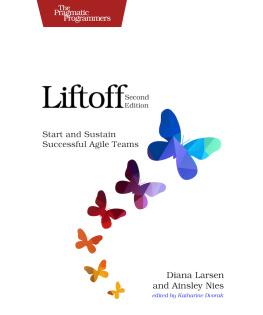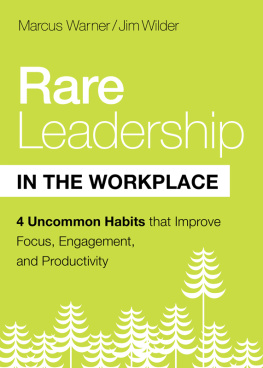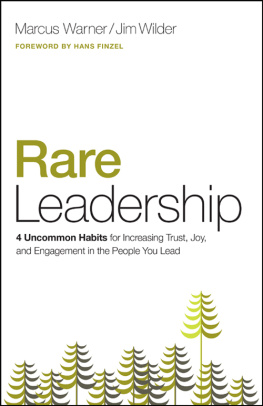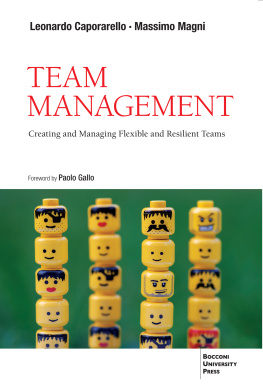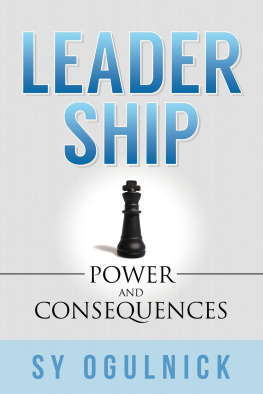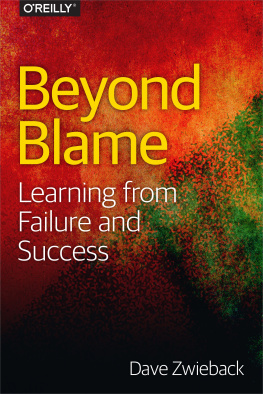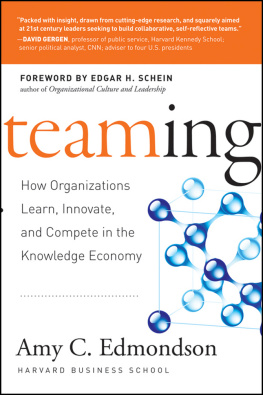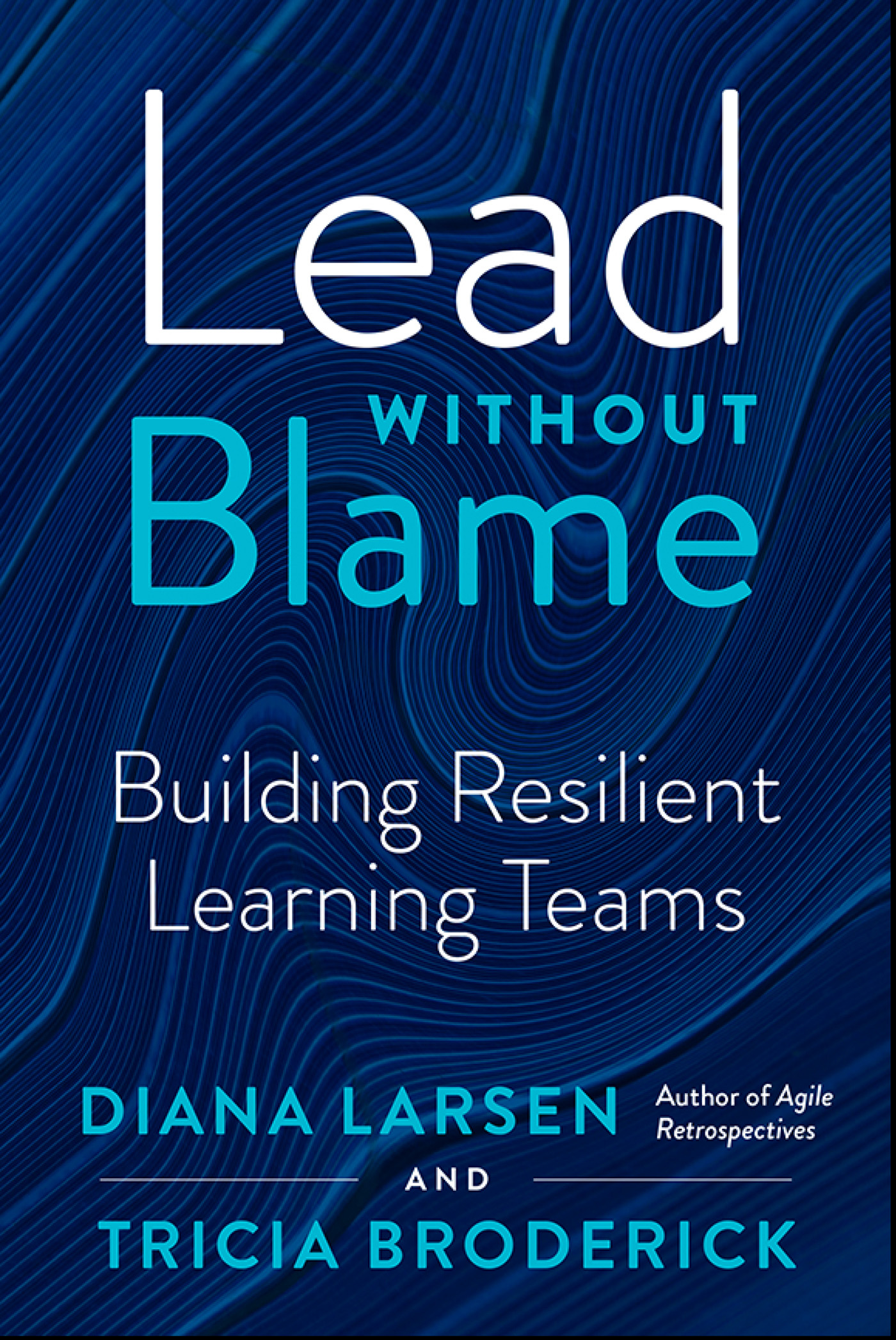Contents
Guide
Page List
Lead without Blame
LEAD WITHOUT BLAME
BUILDING RESILIENT LEARNING TEAMS
DIANA LARSEN
TRICIA BRODERICK
CONTRIBUTION BY
GILMARA VILA NOVA-MITCHELL

Lead Without Blame
Copyright 2022 by Diana Larsen and Tricia Broderick
All rights reserved. No part of this publication may be reproduced, distributed, or transmitted in any form or by any means, including photocopying, recording, or other electronic or mechanical methods, without the prior written permission of the publisher, except in the case of brief quotations embodied in critical reviews and certain other noncommercial uses permitted by copyright law. For permission requests, write to the publisher, addressed Attention: Permissions Coordinator, at the address below.

| Berrett-Koehler Publishers, Inc.
1333 Broadway, Suite 1000
Oakland, CA 94612-1921
Tel: (510) 817-2277, Fax: (510) 817-2278
www.bkconnection.com |
Ordering information for print editions
Quantity sales. Special discounts are available on quantity purchases by corporations, associations, and others. For details, contact the Special Sales Department at the Berrett-Koehler address above.
Individual sales. Berrett-Koehler publications are available through most bookstores. They can also be ordered directly from Berrett-Koehler: Tel: (800) 929-2929; Fax: (802) 864-7626; www.bkconnection.com
Orders for college textbook/course adoption use. Please contact Berrett-Koehler: Tel: (800) 929-2929; Fax: (802) 864-7626.
Distributed to the U.S. trade and internationally by Penguin Random House Publisher Services.
Berrett-Koehler and the BK logo are registered trademarks of Berrett-Koehler Publishers, Inc.
First Edition
Paperback print edition ISBN 978-1-5230-0054-8
PDF e-book ISBN 978-1-5230-0055-5
IDPF e-book ISBN 978-1-5230-0056-2
Digital audio ISBN 978-1-5230-0057-9
2022-1
Book production: Westchester Publishing Services
Cover design: Adam Johnson
I dedicate this book to my grandchildren, Jackson Spear, Tndr Larsen, and River Larsen. And to every one who accepts the challenge of conceiving and establishing workplaces where every one in every part can thrive. Lets collaborate to give our children and grandchildren the enriching work and work environments they deserve.
Diana Larsen
I dedicate this book to the late David Hussman. He viewed every problem as an opportunity to explore with endless passion and curiosity. I carry this and more with me. And whenever I do hesitate, I can hear him saying, You got this, sister! I made a promise to David to keep paying help forward. I hope this book honors that promise.
Tricia Broderick
Contents
Figures and Tables
Foreword
A few years ago, I invited my extended leadership team to attend a weeklong leadership workshop. During a break, I was having a conversation with one of the co-trainers, Tricia Broderick, about my leadership failures. A few minutes before the conversation, Id just completed a failure bow. I was acknowledging my fault in the slow execution of a change that was critically important to the success of our organization. At the time, I was very focused on how I was failing to create a strong and supportive context for the team and to support more team autonomy. Tricia said to me, Van, you know your ability to publicly admit your failures is your superpower. I thought, Superpower? What is she talking about? And just like that, I shifted from thinking about what I was doing wrong to what more I could do to help. Could I use this superpower for more? Did I have other superpowers that might be useful?
As I write this, I am almost midway through my first year as the vice president of information technology of the 40-plus-billion-dollar enterprise that is the University of California. I am leading an organization that has 8,000 IT professionals supporting teaching, research, health care, and investing.
Previously, I had been leading a much smaller organization through a difficult agile transformation. My entire organization was unfamiliar with agile. My relatively new leadership team was still struggling with burnout caused by lack of trust in each other and our teams, an inability to engage in constructive conflict, and pressure from me to make major changes happen while still trying to align on the goals. Through her intense curiosity, wisdom, humor, experience, insight, and compassion, Tricia managed to unlock something inside me and my team: our ability to work effectively as a high-performing team and our shared passion for cultivating other high-performing teams within our organization.
Later, I encountered Diana Larsen and her ideas. And I have been a fan ever since. Diana is an expert at helping you to deconstruct the steps necessary for people to move from groups to teams that consistently deliver value. Shes someone who manages to find the way and the words to make it simple to take teams through successful lift-offs that are oriented around vision, mission, and shared social contracts to a place where they arent just consistently delivering business value; they are consistently optimizing their delivery of that value.
They have both taught me lessons that are used every day. Ive learned the importance of openly cultivating my curiosity for learning in ways that support my teams. Ive learned how to model vulnerability, demonstrate compassion for my team as we learn, and offer visible and vocal confidence in my teams ability to learn and execute. In this book, you will learn these skills and more through a framework that will help you be a learning leader in the increasingly volatile, uncertain, complex, and ambiguous world that we all now live in.
What Diana Larsen and Tricia Broderick have put into Lead without Blame: Building Resilient Learning Teams is a framework for the change needed in yourself to help create and nurture high-performing, resilient learning teams. It is a framework that I wish I had years ago, because it clearly and eloquently breaks down the principles needed in leadership to shift from blaming to learning, and it connects those principles seamlessly with tools we need to support resilient teams that are tightly aligned and continuously learning. It does that by showing you how to strengthen your teams inclusivity while minimizing power dynamics.
While certainly not prescriptive, the book ties together real-world research with experience gained through coaching, mentoring, teaching, and leading a wide variety of organizations in order to help you design and structure your team and its ways of working to avoid the pitfalls of activity instead of progress and of bottlenecks and dependencies instead of autonomy and agility.
For teams and leaders, the last several years have been a roller coaster of pandemics and prejudices, digital boom, and baleful digital divides. Never has there been a time when resilient teams are needed more. There has been too much of a shift to technology as a connecting factor. It is not the technology that has allowed us to be resilient and connected. It is our desire as human beings to connect; our ability as friends, family, and colleagues to empathize; our skills as professionals in helping each and every one to be seen. Sometimes this happens when we turn out the lights to allow everyone to see how the sparks in the darkness shine, and sometimes it happens when we create the space for quiet so that we can hear the whispers of beautiful butterfly wings. Although the contents of this book are timeless, the moment we are in also makes them timely.


